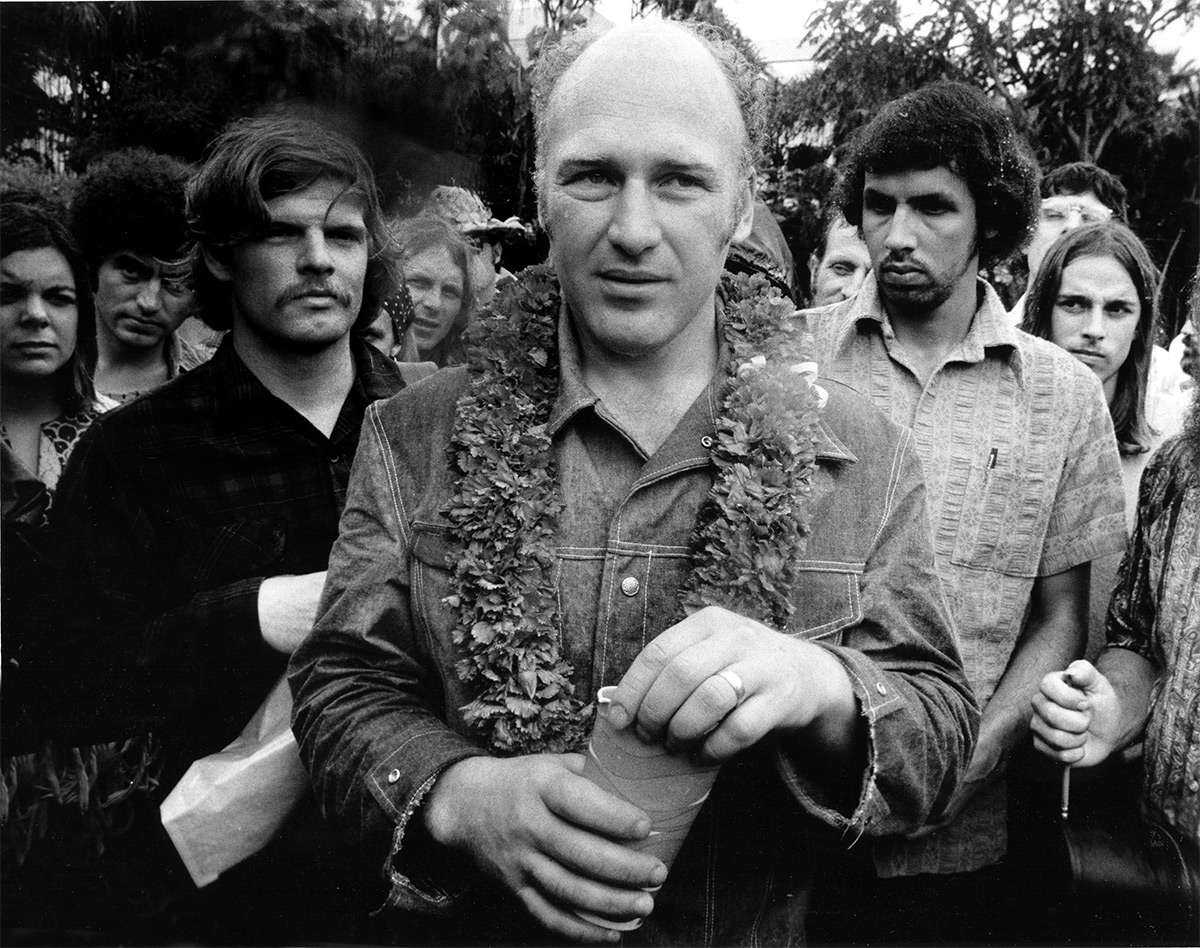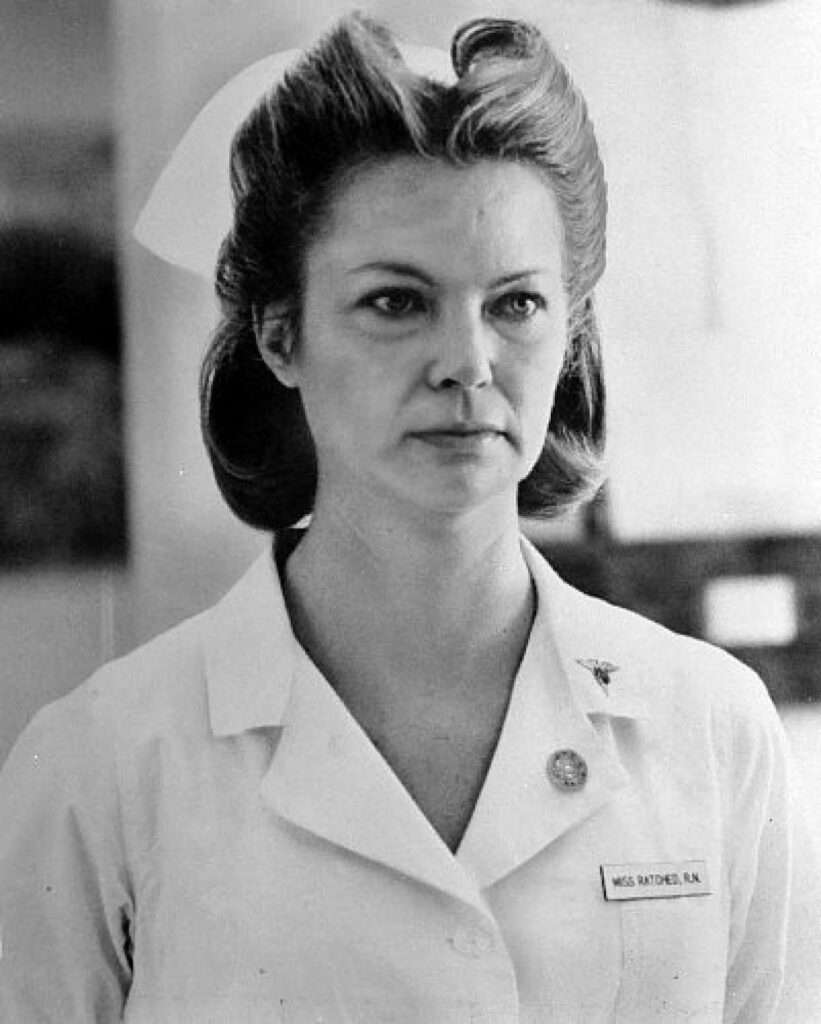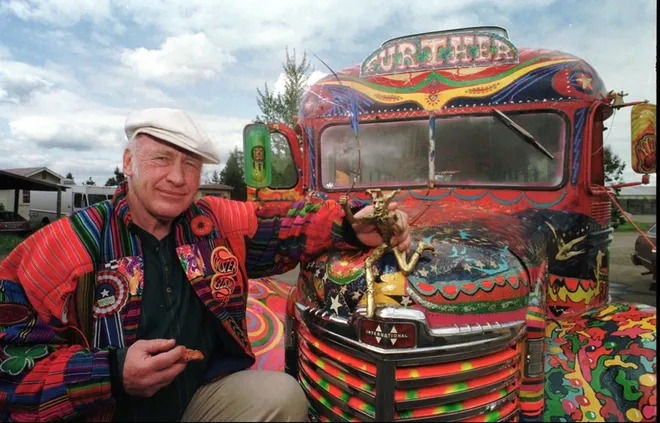A Literary Maverick | Ken Kesey
A Literary Maverick | Ken Kesey – Ken Kesey, a prominent figure in American literature and the counterculture movement, remains a fascinating subject due to his influential works and unconventional lifestyle. This article delves into Kesey’s life, exploring various aspects of his journey, from his early years to his rise as a literary figure and his role in the psychedelic movement.
Key Takeaways
- Early Life: Kesey’s formative years set the stage for his later works and philosophies.
- Literary Achievements: “One Flew Over the Cuckoo’s Nest” remains a cornerstone of Kesey’s literary legacy.
- Counterculture Influence: Kesey’s involvement with the Merry Pranksters and LSD movement marked a significant period in the 1960s American counterculture.
Early Years and Education
Born in 1935 in La Junta, Colorado, Kesey grew up in a family where imagination and storytelling were valued. This environment was instrumental in nurturing his creative talents.
Childhood and Adolescence
Kesey’s childhood was marked by a strong connection to nature and a burgeoning interest in literature and drama.
Academic Pursuits
Kesey attended the University of Oregon, where he developed a keen interest in theater and writing, setting the foundation for his future literary pursuits.

Literary Career
Kesey’s literary career took off with his first novel, “One Flew Over the Cuckoo’s Nest.” This novel, written from his experiences working at a Veterans Administration hospital, became a defining work of the 1960s.
“One Flew Over the Cuckoo’s Nest”
This groundbreaking novel, exploring themes of individuality and institutional control, solidified Kesey’s place in American literature.
Subsequent Works
Kesey continued to write, though none of his later works achieved the same level of fame as “Cuckoo’s Nest.”
Kesey’s Writing Style
Kesey’s narrative style is characterized by a unique blend of realism and psychedelic imagery, reflecting his own experiences and philosophies.
Involvement in the Counterculture
Kesey’s influence extended beyond literature into the realm of the 1960s counterculture, primarily through his association with the Merry Pranksters and his experimentation with psychedelic drugs.
The Merry Pranksters
This group, led by Kesey, became famous for their cross-country trips in a colorfully painted bus, promoting the use of LSD and challenging societal norms.
Kesey and LSD
Kesey’s experimentation with LSD significantly influenced his life and work, making him a key figure in the psychedelic movement.
Influence on Music and Art
Kesey’s influence permeated into the music and art scenes of the time, with connections to bands like the Grateful Dead.
Media Depictions and Documentaries
Kesey’s life and work have been the subject of various documentaries and interviews, offering insights into his philosophy and impact.
- Tripping (1999): This documentary explores Kesey’s journey with the Merry Pranksters. Watch the documentary.
- 1992 Interview: Kesey discusses “One Flew Over the Cuckoo’s Nest” and his novel “Sailor Song.” View the interview.
- MAGIC TRIP (Official Trailer): A glimpse into Kesey’s life and the infamous road trip with the Merry Pranksters. See the trailer.
Later Years and Legacy
In his later years, Kesey continued to write and participate in various cultural events, leaving behind a legacy that continues to influence writers, artists, and thinkers.
Kesey’s Impact on Literature and Culture
Kesey’s works and his role in the counterculture movement have had a lasting impact on American culture and literature.
Commemoration and Tributes
Various tributes and commemorations have been made in Kesey’s honor, reflecting his enduring influence in the literary and cultural landscape.
Family Life and Personal Struggles
Kesey’s family life was as intricate as his novels. Married to his high school sweetheart, Faye Haxby, they had three children together. Kesey’s life, however, was not without its challenges, including drug addiction and infidelity, which strained his marriage. Despite these personal hurdles, he maintained close relationships with his children, and these personal dynamics often influenced his characters and narratives.

Literary Evolution and Later Works
Kesey’s writing journey didn’t stop with “One Flew Over the Cuckoo’s Nest.” He authored “Sometimes a Great Notion” (1964), a novel that delved into the complexities of human relationships and societal pressures. The story of the Stamper family’s logging business in Oregon, and their struggles against both the community and natural forces, showcased Kesey’s mastery in depicting multifaceted conflicts and characters. The novel was later adapted into a film starring Paul Newman and Henry Fonda.
Kesey’s later literary pursuits included plays, children’s books, and the experimental group novel “Caverns,” written in collaboration with his students under the pseudonym O.U. Levon. These works, although less celebrated than his early novels, demonstrated his continued creativity and commitment to literary exploration.
Political Activism and Views
Kesey’s political activism was as fervent as his literary pursuits. A vocal critic of the Vietnam War and a supporter of the civil rights movement, he often found himself at odds with the government, leading to arrests and even jail time. His experiences during this tumultuous period deeply influenced his writing and public persona.
Kesey’s Controversies and Cultural Impact
Kesey was a polarizing figure, with his experimentation with LSD and other psychedelic drugs being a point of contention. While some criticized his drug use, others saw it as a form of creative exploration. Additionally, his personal life, particularly his treatment of women, was not without controversy.
Despite these issues, Kesey’s cultural impact is undeniable. His novel “One Flew Over the Cuckoo’s Nest” was adapted into an Academy Award-winning film, bringing his work to a broader audience and cementing his place in American pop culture.
The Ken Kesey Collection and Legacy
The Ken Kesey Collection at the University of Oregon is a significant resource for understanding his life and work. It includes manuscripts, correspondence, photographs, and other materials that offer insights into his creative process and personal life. Kesey’s influence on literature, counterculture, and film is profound, and his works continue to be celebrated and studied for their unique perspective and boundary-pushing themes.
Kesey’s journey from a young, ambitious writer to a counterculture icon and an elder statesman of the literary world reflects a life lived unapologetically on his own terms. His legacy continues to inspire and challenge new generations of readers, writers, and thinkers.
For more detailed insights into Kesey’s life and works, visit the resources on Oregon Encyclopedia, Britannica, Literary Summaries Online, and Literary Theory and Criticism.







